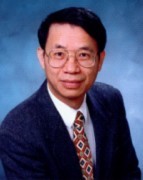
报告人简介: Shin-Tson Wu(吴诗聪)是中弗罗里达大学光学与光子学院的Pegasus教授,在2001年加入UCF之前,曾在休斯研究实验室工作18年。吴教授在南加州大学获得量子电子学博士,在台湾大学获得物理学士学位。吴教授是IEEE、OSA、SID和SPIE的会士,曾获得SID的Slottow-Owaki 奖(2011),OSA约瑟夫·弗劳恩霍夫奖/罗伯特·伯利奖(Joseph Fraunhofer award/Robert M. Burley)(2010),SPIE的G. G. 斯托克斯奖(G. G. Stokes)(2008)和SID的正·珞佳门奖(Jan Rajchman ) (2008)。他曾合作撰写了7本书籍,400多篇期刊论文,70多项美国授权专利。他是IEEE / OSA显示技术杂志的创始总编辑。目前,吴教授担任SID的荣誉和奖励评审委员会委员,SPIE 的斯托克斯奖评审委员会委员,并担任OSA出版理事会副主席。
Biography: Shin-Tson Wu is a Pegasus professor at CREOL: The College of Optics and Photonics, University of Central Florida (UCF). Prior to joining UCF in 2001, he was with Hughes Research Laboratories (Malibu, California) for 18 years. He received his Ph.D. in quantum electronics from University of Southern California(LosAngeles, California, USA) and BS in physics from National Taiwan University (Taipei, Taiwan).Prof. Wu is a Fellow of the IEEE, OSA, SID, and SPIE. He is a recipient of SID Slottow-Owaki prize (2011), OSA Joseph Fraunhofer award/Robert M. Burley prize (2010), SPIE G. G. Stokes award (2008), and SID Jan Rajchman prize (2008). He has co-authored 7 books, over 400 journal papers, and over 70 issued U.S. patents. He was the founding Editor-In-Chief of the IEEE/OSA Journal of Display Technology. Currently, Prof. Wu is serving as SID Honors and Awards committee, SPIE G. G. Stokes Award committee, and Vice Chair of OSA Publication council.
报告摘要: 自从2002年Kikuchi发现了利用稳态聚合物拓宽蓝相液晶温度范围和2008年三星展示了第一台蓝相LCD样机之后,整个世界对这个颠覆性技术的到来充满了期待。以Kerr效应为基础的蓝相液晶技术拥有以下优点:微秒级响应时间,无需定向层,暗场时光学上各向同性,视角大,透过率对液晶盒厚度不敏感,易于大屏制作等。对于场序性的RGB LED色彩,可以降低动态残影,同时可以提高三倍光学效率和分辨率。然而,在广泛应用之前还有一些瓶颈问题需要克服,例如高操作电压,迟滞现象,双折射残留和图像残留。在这次报告中,我将会介绍关于这些基本问题的最新进展,和一种新的具有低操作电压、高透过率、无迟滞和双折射残留的蓝相LCD。蓝相液晶时代曙光将呈现在我们眼前。
Abstract: Since Kikuchi developed a polymer-stabilization process for widening the blue-phase liquid crystal temperature range in 2002 and Samsung demonstrated the first blue-phase LCD prototype in 2008, whole world is waiting for the era of this disruptive technology to come. The Kerr-effect-based blue-phase LCD exhibits several revolutionary features, such as microsecond response time, no need for alignment layer, optically isotropic dark state for inherently wide view, and cell gap insensitivity for easing fabrication provided that in-plane switching electrodes are employed. With sequential RGB LED colors, the spatial color filters can be eliminated so that both optical efficiency and resolution density are tripled. However, some bottlenecks such as high operation voltage, hysteresis, residual birefringence, and image sticking, remain to be overcome before its widespread application can be realized. In this talk, I will report recent progresses addressing these fundamental problems. A new blue-phase LCD with low operation voltage, high transmittance, and free from hysteresis and residual birefringence will be described. The dawn of the blue-phase LCD era is on the horizon.
|